里卡多·波菲建筑师事务所,巴塞罗那,西班牙
建筑设计:里卡多·波菲
里卡多·波菲建筑师事务所,巴塞罗那,西班牙
建筑设计:里卡多·波菲
老工厂
正如里卡多·波菲所说,这座老工厂是他献给加泰罗尼亚地区的工业美学赞歌。20世纪初有大量水泥厂,其空间主要分水泥生产和存储两大区域。他从这些遗址中看到了创造新空间的可能,并因此喜出望外。
改造工程从炸药和手提钻的局部破拆开始,总共持续了一年半。这是一项精准的工作,不但要展示工厂不为人知的建筑形式,还要复原某些空间——就像雕刻家先要研究材料一样,他必须从水泥中凿出新的空间。在去掉了大量原始构件之后才得到最终的造型,有些构件则加以保留。最终的成果是用原始的材料水泥雕刻而成的。形态各异的空间特色鲜明——有大教堂,有花园,还有筒仓。后来我们又用一种综合了建筑史上各种语言的特殊语汇来标示这些新的构造,一种与本土建筑相对的文化语言。我们将想象中的门窗、楼梯和伪透视放在外墙上和局部室内。在加泰罗尼亚工匠的得力帮助之下,水泥工厂被慢慢改造成为一件永未建成的作品。
接下来是种植绿化。这些体块需要一个绿色的基座,让植物爬上墙壁,再从屋顶垂下。最后是功能的置换。我们要给这座工厂的新构造不同的用途,创造新的功能。
里卡多·波菲一贯的想法是用最少的元素装点室内,即只保留最本质的东西。他的建筑脱胎于原建筑,将筒仓分成多层,用作建筑工作室——设计、建模、管理、存档,还有一个堂皇的商务多功能厅,被我们称作“大教堂”。
里卡多·波菲建筑事务所设计了建筑、室内和家具。室内和室外一样,是集中精神、沉思冥想的空间。它给人带来一种特殊的感受,又能容纳人的个性。在这一点上,空间尤为和谐,极大缓解了人行为的压力——极少的材料和装饰是其特色。
家具设计不会追随时尚,也没有过多的个性。作为实用的原型,任何设计作品都必须能超越时间,并以当代工艺制作。只有这样才能创造出工作和休闲的空间,并满足有文化、有责任、有自由的现代人的需求。
虽然生活在都市,里卡多·波菲却总会回到工厂。这座让他魂牵梦绕的老工厂在过去的几十年中一直在不断翻新。空间的拓展和美化就像是在撰写生平,体块本身犹如不断丰富的传记。里卡多·波菲曾说,“这座工厂是一个充满魔力的地方,它奇妙的氛围不是肉眼所能发现的。我喜欢让这里的生活井井有条,就像一种仪式,与我动荡漂泊的生活完全不同。” (尚晋 译)

1 鸟瞰/Bird's eye view
La Fábrica
As Ricardo Bofill says, La Fábrica (the Factory) is his tribute to the industrial aesthetics of his homeland, Catalonia. There were a lot of cement factories in activity at the beginning of the 20th century. The spaces were mainly divided into two areas: cement production and stock. He was fascinated to see possibilities for new spaces in those ruins.
The construction work, which began with partial destruction with dynamite and jack hammers, lasted for a year and a half. It was a work of utmost precision, both in revealing the factory's hidden forms and in recovering certain spaces; like a sculptor whose first task is to explore the material, he had to carve into the cement to create new spaces. A lot of original elements had to be removed to obtain the final form, though certain elements are preserved. The final form is sculpted out of the original material, the cement: a great variety of spaces appeared: the Cathedral, the garden, and the silos. Later we designated these new structures with a peculiar vocabulary synthesizing various languages in architectural history, a cultured language in opposition to vernacular architecture. We applied imaginary windows, doors, stairs, and false perspectives to the exterior walls and some interiors. With the valuable help of Catalan craftsmen, the Cement Factory underwent slow transformation and remained an unfinished work.
The following phase was landscaping. It was necessary to provide a green platform to these structures; plants would climb walls and hang from the roofs. The last phase was functional replacement: we wanted to assign various purposes to the factory's new structures and invent new functions for them.
Ricardo Bofill's consistent intention is to decorate the interiors with scarce and minimal elements, i.e., to preserve only the most essential. His architecture grew out of the original buildings. He divided the silos into different floors to accommodate various activities of the architecture studio: designing, modeling, administrating, archiving and a magnificent, enormous room for business and social events that we call "The Cathedral".
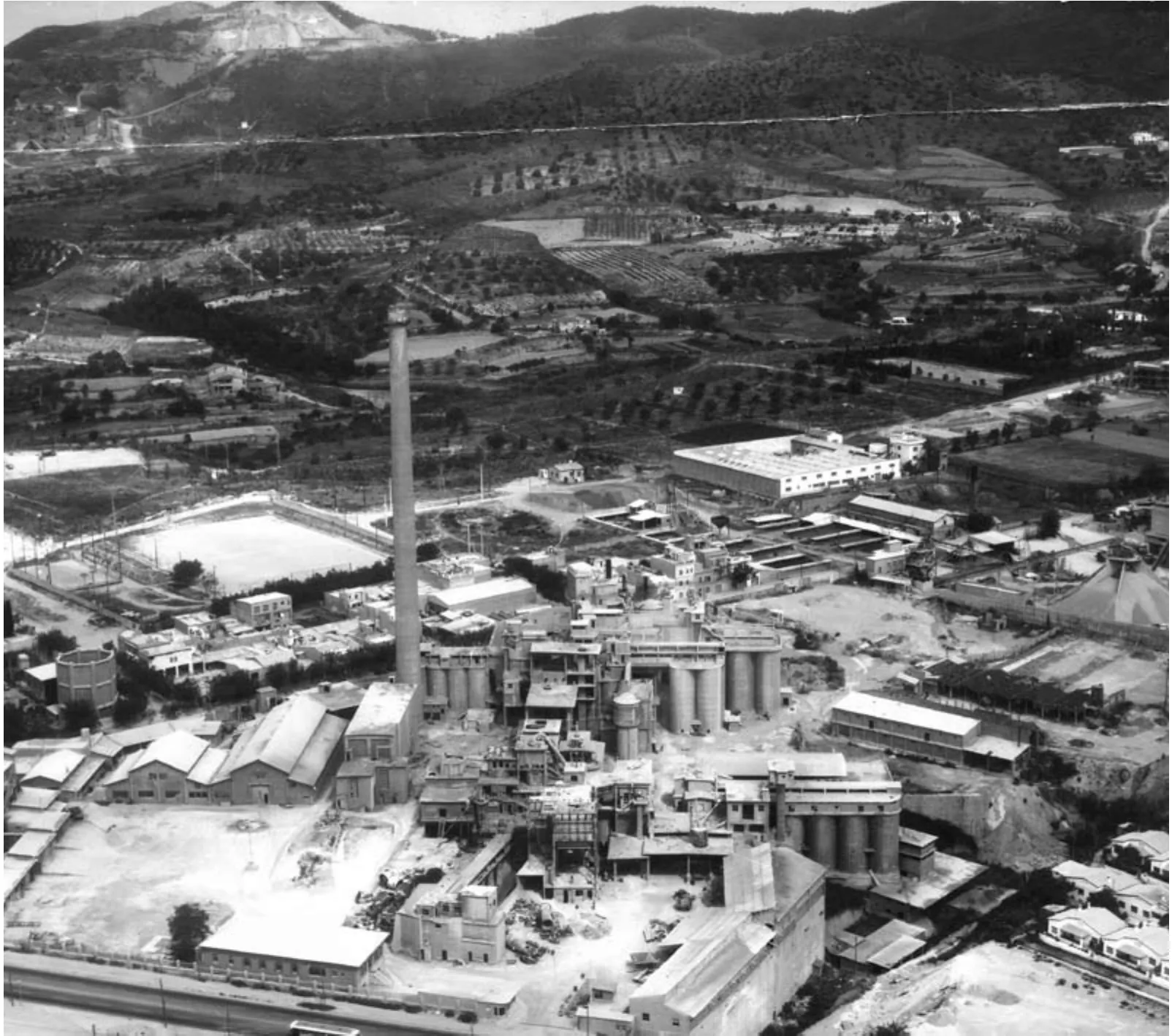
2 废弃的工厂/the abandoned old factory
Ricardo Bofill Taller de Arquitectura designs buildings, interiors, and furniture. the interiors, as is true of exteriors, are spaces conceived for meditation and concentration. they are meant to arouse a special sensation and at the same time accommodate human individuality. In this respect, the spaces are deliberately harmonious and neutral, which, characterized by a minimalism of material and decoration, greatly relieve the tension of human behavior.
Furniture design does not follow fashion and is free of excessive personalization. Conceived as functional archetypes, any object should be designed in a timeless spirit and be manufactured in accordance with contemporary craftsmanship. Only in this way can spaces be created for work as well as leisure, while fulfilling the need of cultured, responsible and liberal modern people.
Though cosmopolitan by definition, Ricardo Bofill returns always to the factory, that old industrial building that he never ceased to renew over the years. Expanding and embellishing its spaces is like writing a biography, constantly enriched by the evolution of structures. Ricardo Bofill says, "The factory is a magic place whose fantastic atmosphere is scarcely perceivable to the naked eye. I like to make the life here in perfect order, like a ritual, entirely different from my restless, vagrant life."

3 入口/Entrance
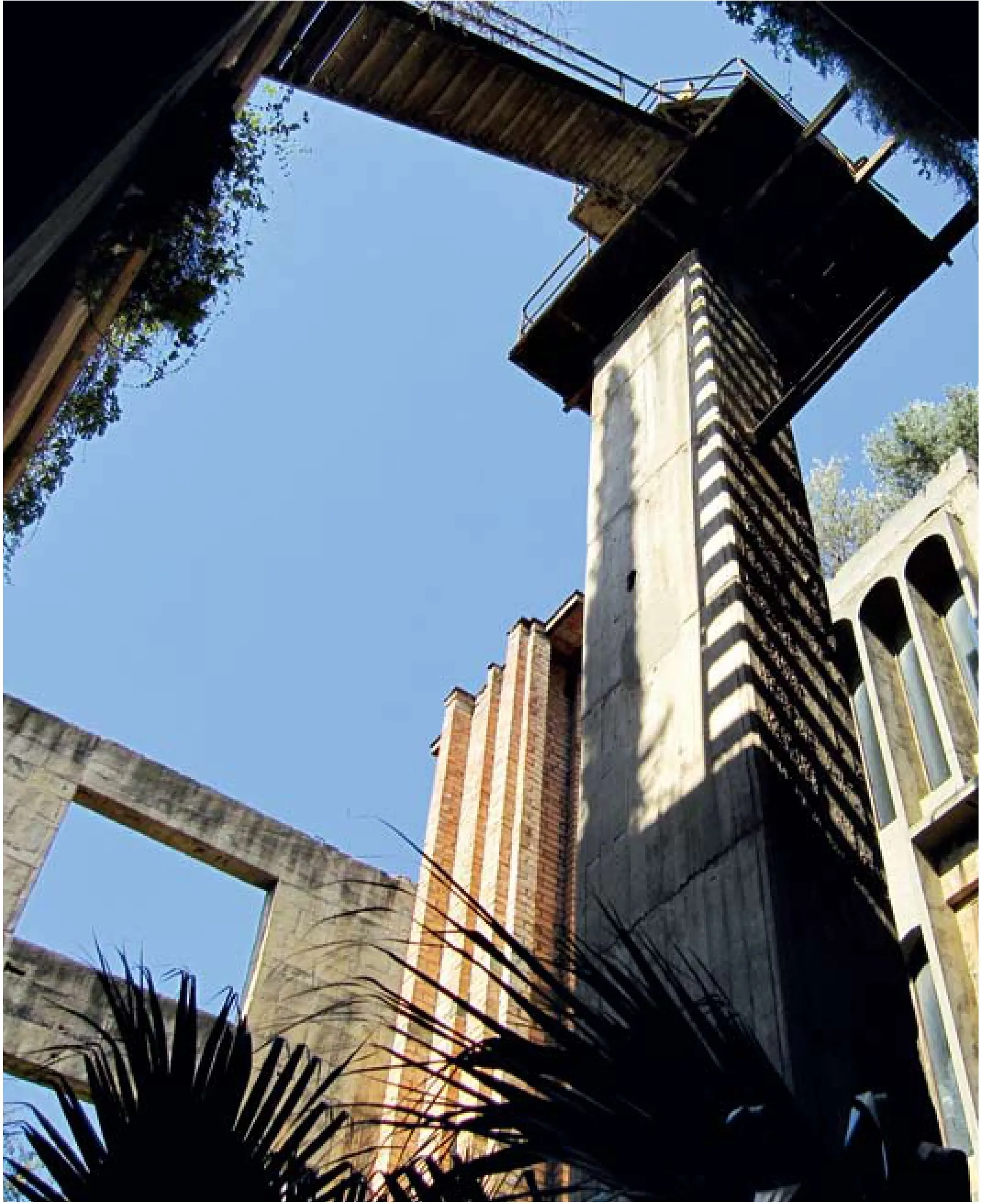
4 连桥/Bridge
评论
戴春:这是一个尽量存留原貌并凸显其空间特质的工业建筑更新,依据被发掘清理出来的空间形式来适应与分配工作室多种功能的设计逻辑,加之局部嵌入带有加泰罗尼亚民间哥特式特征的元素与工业建筑骨架的部分裸露,一系列似乎是为了标示空间新功能的多种设计语汇并置,都令改造后的建筑有种纪念工业时代的超现实的意味。这些操作让这个新的空间抽取了原有空间那些令人震撼的部分,承担起了激发进入者更多想像、更多探索的作用,形成了这个工作室空间特殊的创作氛围。傅绍辉:按照建筑师个人意愿去实现作品,反映建筑师对场地、材料、功能的理解,并以一种方式表达出来是建筑设计中最令人兴奋的事情之一。然而,各种现实(特别是业主)的要求,又使建筑师的很多思想难以表达,甚至踪迹全无。建筑师自我的工作空间或自宅因而成为建筑师表达其思想和对建筑理解认知的最佳试验场。相对于自宅的私密,工作室则更能体现出空间的公共开放性。
里卡多·波菲建筑事务所同样是利用圆筒空间建筑,新材料的介入和表现及其简单。其最大的特征在于圆筒的内部成为“可达”空间。由于其“可达”的特性,历史的遗存与当今形成可“触摸”的交流,从而赋予建筑空间特定的“意义”。这种“意义”最终是通过空间尺度和几何形态的特殊性完成并传递出来。

5 夜景/Night view

6 筒仓E平面/Floor plan of silo E
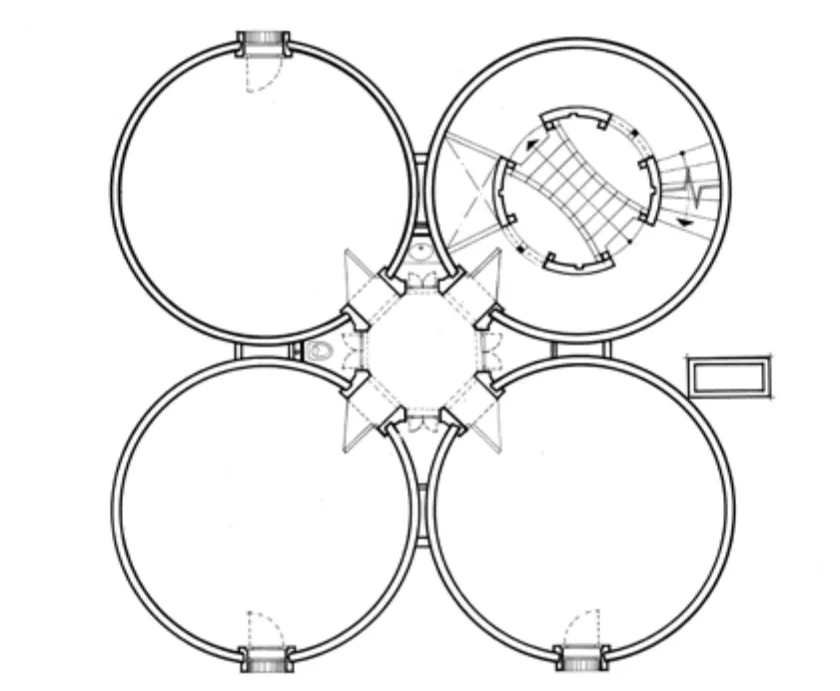
7 筒仓F平面/Floor plan of silo F
Comments
DAI Chun: this renovation project strives to preserve the industrial building's original appearance and highlights its spatial characteristics. The design logic is to accommodate and distribute various functions of the studio according to the spatial form that is explored and cleared out. Moreover, some vernacular elements of the Catalonian Gothic are introduced, while the industrial building's structural framework is partially exposed. A variety of design vocabularies are juxtaposed to demarcate new spatial functions. All of these strategies endow the renovated space with a surrealist meaning that recalls a bygone industrial era. Overall, the new space extracts the impressive part of the original space and encourages the users to further imagine and explore, which determine the studio's distinctive atmosphere of creativity.

8 “大教堂”剖面/Section of "la Cathedral"
FU Shaohui: One of the most exciting things in architectural design is that the architect is able to realize his work based on his own willingness and expresses his understanding of the site, the material, and the functions in a certain way. However, various realistic requirements (especially from clients) make it hard for this kind of expressions, or even erase them. As a result, the architect's own working space or house becomes the best experimental playground to express their architectural thinking and perception. In contrast to the privacy of residential houses, it is easier to show the publicity and openness of space through the design of studio.
the Atelier of Ricardo Bofill also uses a cylindric space, and the interference and presentation of new material is quite simple. The most distinctive characteristic is that the interior of the cylindric space is turned into an "accessible" space. Due to the "accessibility", it is possible to realize a "tangible" communication between the historical remains and the present environment, so as to endow the architectural space with a specific "significance" that is accomplished and conveyed via the scale of the space and the distinction of its geometric form.

9 起居厅/Living room
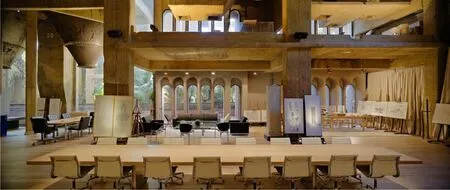
10 多媒体室/Multimedia room
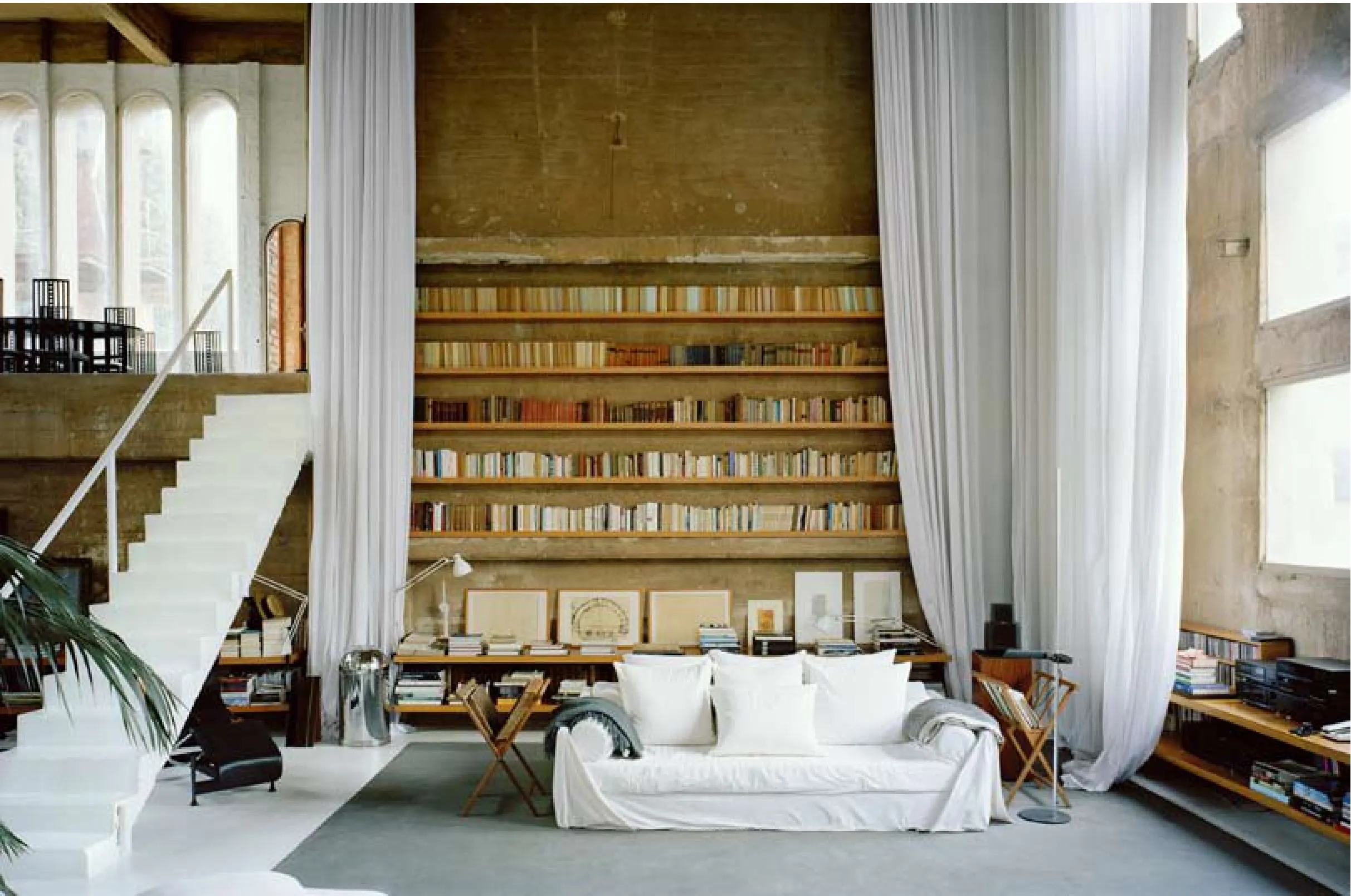
11 起居厅/Living room

12 多媒体室一隅/A corner of multimedia room
项目信息/Credits and Data
主创建筑师/Principal Architect: 里卡多·波菲/Ricardo Bofill功能/Program: 里卡多·波菲工作室和自宅/Atelier and house of Ricardo Bofill
建筑面积/Floor area: 3000m2(包括花园面积/+ garden)材料/Material: 水泥/Cement
设计时间/Design Period: 1973-1975
摄影/Photos: 里卡多·波菲建筑事务所/Ricardo Bofill Taller de Arquitectura
Ricardo Bofill Taller de Arquitectura, Barcelona, Spain, 1975
Architect: Ricardo Bofill
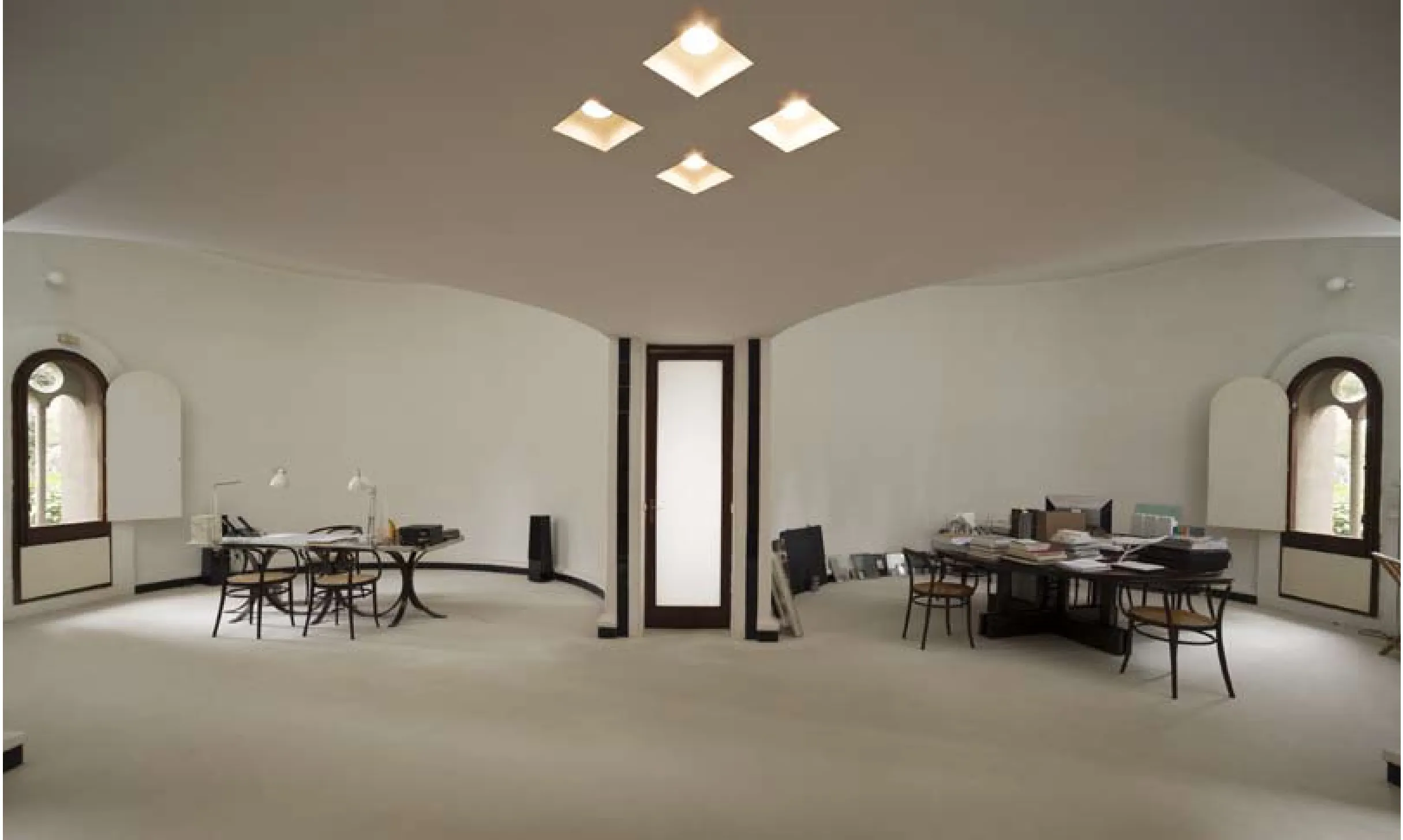
13 里卡多·波菲办公室/Ricardo Bofill's office

14 主楼梯间/Main staircase

